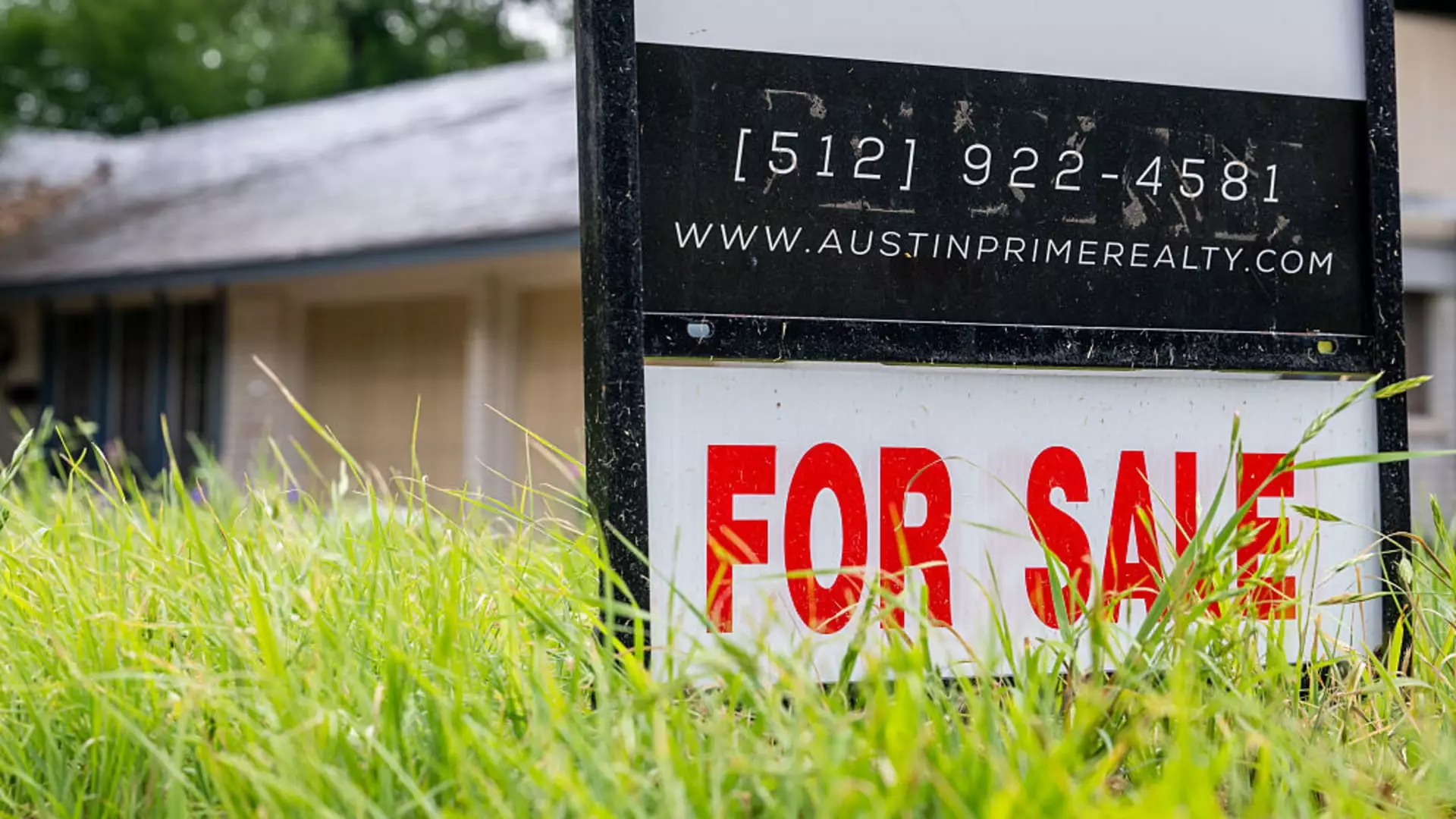In the ever-shifting landscape of the housing market, a potential crisis is brewing beneath the surface as mortgage rates stagnate while buyer enthusiasm wanes. Last week, mortgage applications for purchasing homes plummeted by 4%, contrasting markedly with the norms of a year ago when buyers rushed to take advantage of rising rates. The lethargy now observed isn’t merely a seasonal dip; it is a reflection of burgeoning economic uncertainty that threatens to dissuade even the most motivated of homebuyers. The Mortgage Bankers Association (MBA) outlined these findings recently, indicating a worrisome shift in consumer confidence.
The Real Cost of Mortgage Rates
Interestingly, while the average interest rate for a 30-year fixed mortgage has seen a marginal decline—sinking from 6.90% to 6.89%—the lack of significant movement in rates hardly alleviates the overarching anxiety for potential buyers. Homeownership is increasingly becoming an elusive dream for many, particularly for those eyeing properties priced at conforming loan balances. With average rates lingering just below the psychologically significant 7% mark, it seems that would-be buyers are exercising caution. When we lay this out against the backdrop of an economic slowdown, it’s not surprising to see potential homeowners freezing in their tracks, hesitant to commit to what once was a hallmark of the American Dream.
First-time Buyers: Are They Being Left Behind?
First-time homebuyers, a critical component of the housing market’s ecosystem, are still in the game but struggle against fluctuating inventory and ever-looming economic fears. The slow yet steady increase in housing inventory in various markets offers a silver lining, yet it feels overshadowed by the stark reality that many are confronting. The fact that Federal Housing Administration (FHA) purchase applications experienced only a slight drop suggests that while first-time buyers remain intrigued, they are treading carefully, indicative of a broader cultural hesitation wrought from economic instability.
Refinancing: Trends Amid a Rate Standstill
Refinancing is another area that tells a compelling story about consumer sentiment. Even with a 42% increase in refinancing applications compared to last year, recent weeks have seen a further 4% dip in activity. Borrowers remain reluctant to move forward, wishing instead for a substantial dip in rates before making any commitments. The average size of refinance loans has diminished to just under $290,000, revealing how sentiment around the economic horizon impacts even those who have previously settled into their homes. As American homeowners hold their breaths waiting for rates to slide lower, they may unwittingly exacerbate their own uncertainties.
The Economic Lens of Homeownership
These trends highlight an essential narrative about homeownership in the current climate: it is not merely a matter of financial calculations but is heavily influenced by emotional and psychological factors. As anxiety over labor market health and economic growth rises, it remains crucial to ask: What ultimately defines the American Dream if not the very act of securing one’s shelter amidst an ever-evolving economic landscape?
In navigating this complex terrain, it becomes evident that a cohesive plan blending supportive policies with a greater understanding of market dynamics is paramount. Housing affordability remains a pressing issue, one not likely to fade into the background anytime soon. Without addressing these underlying barriers, the dream of homeownership may remain perpetually just out of reach for many.

Leave a Reply